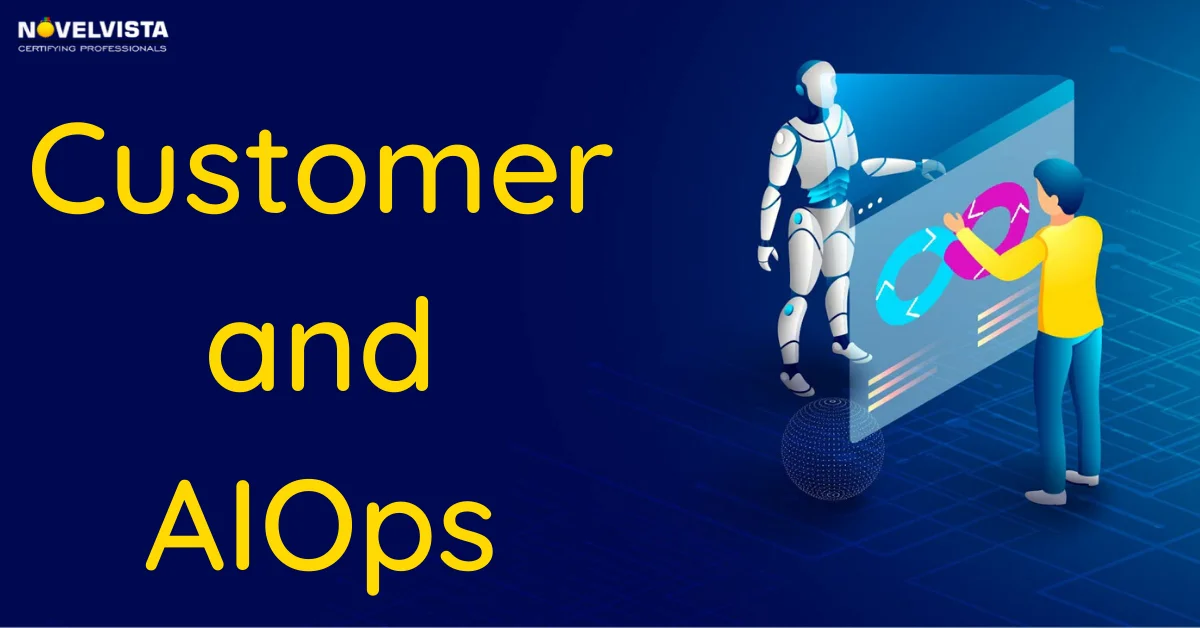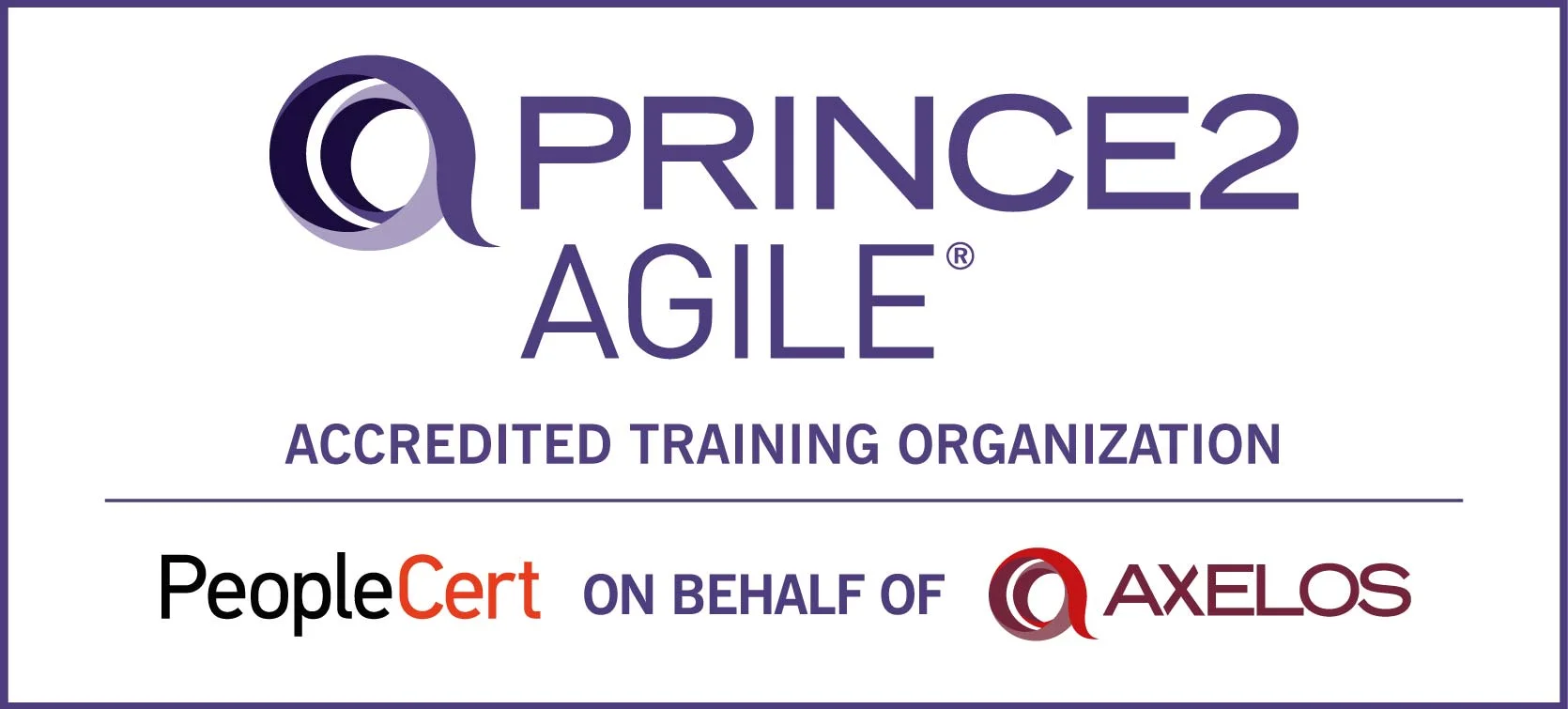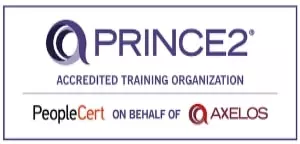- What is the ITIL Digital Transformation Maturity Model?
- How ITIL Enables Digital Transformation
- The Role of ITIL 4 in Digital Transformation
- Key Levels of the ITIL Digital Transformation Maturity Model
- Assessment Criteria for Digital Transformation Maturity
- Benefits of Using the ITIL Maturity Model
- How Organizations Can Apply the ITIL Maturity Model
- Common Challenges in Measuring Digital Transformation Maturity
- Best Practices to Advance Digital Transformation Maturity
- Conclusion
Your organization has modern IT systems, but are they truly optimized for digital growth? ITIL digital transformation helps businesses align IT services with strategic goals, innovate processes, and adopt modern practices while improving efficiency and customer experience. In this guide, we’ll explore how organizations can measure maturity, integrate ITIL agile integration practices, and leverage ITIL innovation to achieve lasting results.
What is the ITIL Digital Transformation Maturity Model?
The ITIL Digital Transformation Maturity Model is a structured framework that helps organizations track their progress in adopting ITIL practices for digital initiatives. It provides a clear path to modernize IT operations, integrate new technologies, and evaluate the effectiveness of IT services. By assessing maturity levels, companies can identify gaps, prioritize improvements, and ensure that digital transformation delivers measurable business value.
This model is not just theoretical; it helps teams connect IT operations with organizational goals while encouraging ITIL innovation and ITIL modernization. Organizations that follow the model can streamline processes, improve service delivery, and support sustainable growth.
For a deeper understanding of ITIL 4 practices, check out our comprehensive ITIL 4 overview blog.
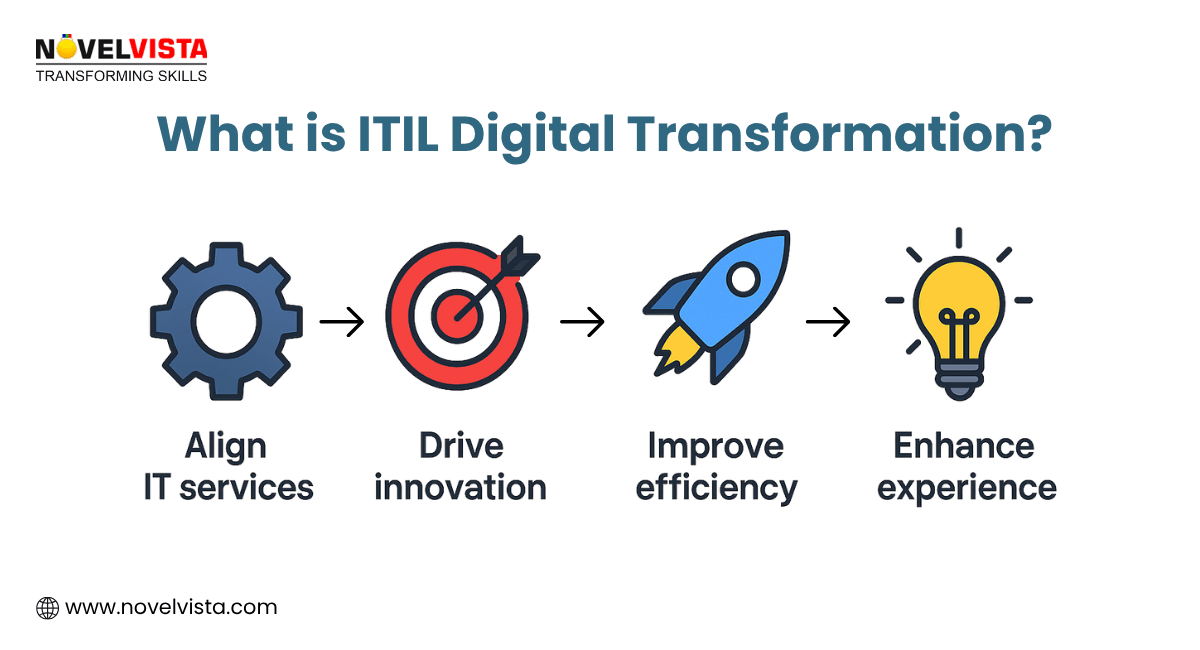
How ITIL Enables Digital Transformation
ITIL digital transformation isn’t only about technology; it’s about aligning IT services with business outcomes, improving agility, and fostering innovation. Here’s how ITIL drives meaningful change:
- Business Alignment: Ensures IT services directly support strategic goals and digital initiatives. This alignment reduces wasted effort and maximizes business value.
- Agility and Adaptability: Encourages flexible approaches that allow teams to quickly respond to market changes, adopt cloud solutions, AI tools, and automation.
- Value Creation: The Service Value System (SVS) and Service Value Chain focus on delivering tangible, measurable outcomes for customers and stakeholders.
- Continual Improvement: Identifies bottlenecks, streamlines workflows, and promotes a culture of ongoing enhancement.
- Risk Management: Provides best practices for identifying, evaluating, and mitigating risks in digital initiatives.
- Enhanced Collaboration: Breaks silos between IT and business teams, fostering better communication and faster problem-solving.
- Improved Customer & Employee Experience: Streamlined processes and higher service quality enhance satisfaction for both clients and staff.
By leveraging these principles, organizations can implement ITIL practices that directly support ITIL digital transformation goals while preparing for modern challenges.
For instance, a global IT services firm implemented ITIL agile integration practices to reduce incident resolution times by 35% while boosting customer satisfaction scores by 20%. Similarly, a retail enterprise optimized its IT operations through ITIL modernization, achieving faster deployment cycles and improved employee productivity. These examples illustrate the tangible impact of applying ITIL best practices in real scenarios.
The Role of ITIL 4 in Digital Transformation
ITIL 4 acts as a modern foundation for digital transformation, combining traditional IT service management with agile, Lean, and DevOps practices. Its role in digital initiatives includes:
- Holistic Framework: Accounts for interactions among people, processes, and technology to ensure effective service delivery.
- Integration with Other Frameworks: Supports ITIL agile integration to accelerate innovation and improve collaboration across teams.
- Support for Innovation: Encourages experimentation, modernization, and adoption of new IT service management practices.
Organizations that embrace ITIL 4 can enhance adaptability, improve service performance, and foster a culture that embraces ITIL innovation.
Key Levels of the ITIL Digital Transformation Maturity Model
The ITIL maturity model has five levels, each representing an organization’s progress in digital transformation:
- Initial / Ad-hoc: Processes are unstructured and reactive. IT services operate inconsistently with minimal alignment to business goals.
- Managed: Some processes are defined and repeatable. Teams start measuring performance and documenting practices.
- Defined: Standardized processes are applied across projects. ITIL practices are integrated into workflows for consistency.
- Quantitatively Managed: Metrics and KPIs are used to optimize performance. Decisions are data-driven, and risks are actively managed.
- Optimizing: Continuous improvement and innovation are ingrained. Automation, AI, and modernization drive efficiency and customer value.
The ITIL Digital Transformation Maturity Model is aligned with ITIL 4, the globally recognized IT Service Management standard maintained by AXELOS. ITIL 4 integrates guidance from Agile, Lean, and DevOps frameworks, ensuring organizations adopt best practices that are internationally validated.
Following these standards ensures that ITIL implementation is credible, measurable, and aligned with industry-leading approaches.
Download: Mastering ITSM Processes Guide
Understand and apply the four core ITSM processes that keep services stable, efficient, and audit-ready
Assessment Criteria for Digital Transformation Maturity
To measure maturity effectively, focus on these key areas:
- Process Standardization: Evaluate how consistently ITIL practices are applied across teams.
- Technology Adoption: Assess the adoption of modern IT tools, cloud solutions, and automation platforms.
- Organizational Culture & Change Management: Measure readiness and engagement of employees in transformation initiatives.
- Customer Experience & Value Creation: Track improvements in service quality, responsiveness, and stakeholder satisfaction.
- Governance, Risk & Compliance: Ensure alignment with internal policies and regulatory requirements.
These criteria help organizations pinpoint gaps, prioritize actions, and strengthen ITIL agile integration efforts.
Benefits of Using the ITIL Maturity Model
Adopting the ITIL Digital Transformation Maturity Model delivers multiple advantages:
- Strategic Alignment: Connects IT services to business goals for measurable outcomes.
- Drive ITIL Innovation: Encourages adoption of modern practices, automation, and AI solutions.
- Enhanced Service Delivery: Improves efficiency, reliability, and agility of IT services.
- Gap Identification: Highlights weaknesses and prioritizes improvement areas.
- Customer & Employee Satisfaction: Streamlined processes lead to better experiences and engagement.
How Organizations Can Apply the ITIL Maturity Model
Practical application ensures that maturity assessments translate into results:
- Conduct maturity assessments using surveys, audits, and performance reviews.
- Map current capabilities against target levels to visualize gaps.
- Develop actionable roadmaps for process improvements and modernization.
- Integrate ITIL agile integration practices and modern ITSM tools to accelerate progress.
Organizations that follow these steps can systematically enhance their digital transformation journey while driving ITIL innovation.
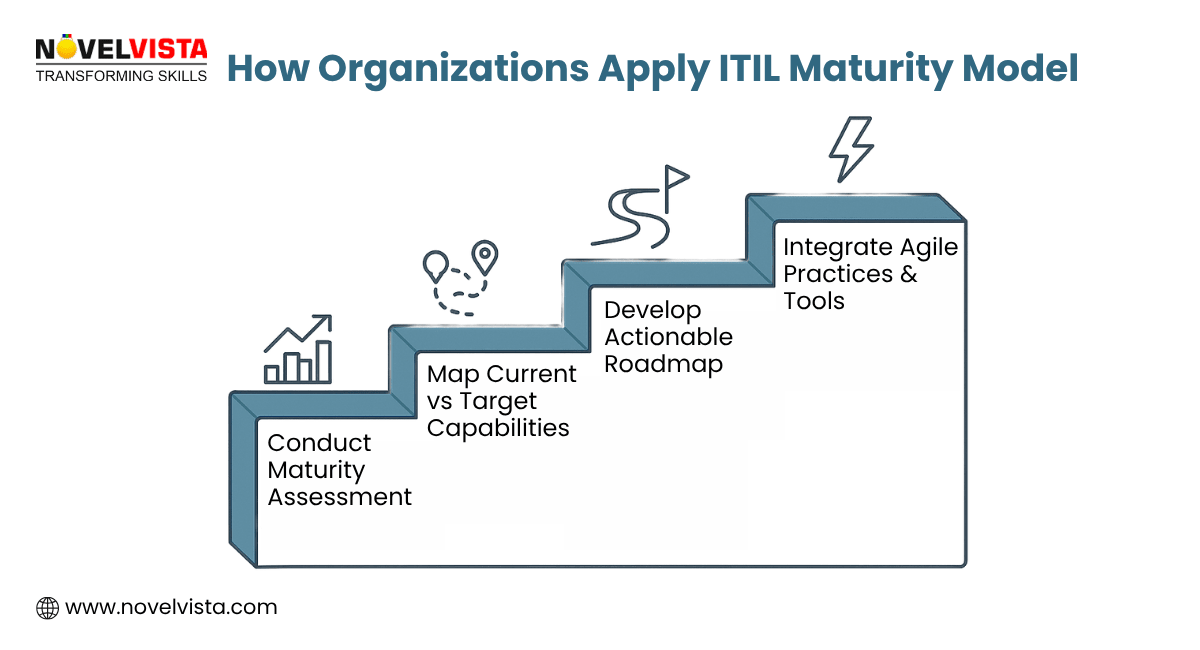
Common Challenges in Measuring Digital Transformation Maturity
Even with a strong model, challenges exist:
- Resistance to Change: Teams may be slow to adopt new ITIL practices.
- Undefined Metrics: Lack of clear performance indicators can hinder measurement.
- Inconsistent Implementation: Different teams may follow ITIL unevenly.
- Misaligned IT Initiatives: Projects may not fully support strategic business outcomes.
Addressing these challenges is crucial for effective adoption of ITIL digital transformation initiatives.
Best Practices to Advance Digital Transformation Maturity
Organizations can overcome challenges and accelerate progress by:
- Engaging Stakeholders: Involve leadership and staff to promote adoption.
- Standardizing Processes: Use ITIL 4 practices for consistency across the organization.
- Leveraging Technology: Apply automation, AI, and cloud solutions to improve efficiency.
- Fostering Innovation: Encourage experimentation, modernization, and ITIL innovation.
- Monitoring & Iterating: Regularly track progress and refine processes for continuous improvement.
Conclusion
Assessing and improving digital transformation maturity through ITIL ensures organizations remain competitive, agile, and innovative. By combining ITIL digital transformation, ITIL agile integration, and ITIL modernization practices, businesses can deliver higher value, streamline operations, and enhance experiences for customers and employees.
Next Step:
Take your ITIL knowledge to the next level! Enroll in NovelVista’s ITIL 4 Foundation Certification Training to gain hands-on skills, assess organizational maturity, integrate agile practices, and implement actionable transformation strategies. Lead your organization confidently into 2025 and beyond.
Frequently Asked Questions
Author Details

Mr.Vikas Sharma
Principal Consultant
I am an Accredited ITIL, ITIL 4, ITIL 4 DITS, ITIL® 4 Strategic Leader, Certified SAFe Practice Consultant , SIAM Professional, PRINCE2 AGILE, Six Sigma Black Belt Trainer with more than 20 years of Industry experience. Working as SIAM consultant managing end-to-end accountability for the performance and delivery of IT services to the users and coordinating delivery, integration, and interoperability across multiple services and suppliers. Trained more than 10000+ participants under various ITSM, Agile & Project Management frameworks like ITIL, SAFe, SIAM, VeriSM, and PRINCE2, Scrum, DevOps, Cloud, etc.
Course Related To This blog
ITIL® 4 Strategic Leader Digital And IT Strategy (DITS)
ITIL® 4 Specialist Drive Stakeholder Value
ITIL® 4 Specialist High Velocity IT
ITIL® 4 Strategist Direct, Plan & Improve
ITIL® 4 Specialist Create Deliver & Support
ITIL® 4 Foundation Certification
Confused About Certification?
Get Free Consultation Call




